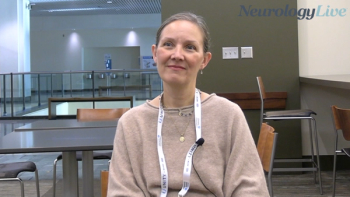Welcome to this special edition of Neurology News Network. I’m Marco Meglio.
Newly announced findings from the phase 1/2 STAAR study assessing the safety and tolerability of ST-920 (Sangamo Therapeutics), a gene therapy candidate in patients with Fabry disease, showed a favorable safety profile with the treatment, coupled with elevated expression of a-Gal A activity that suggests favorable impact on progression of Fabry neuropathy. The company has already begun plans to move the agent in a phase 3 study, which is expected to begin by the end of 2023. The single-dose, dose-ranging, multicenter study featured 13 patients with Fabry disease, aged between 22 and 67 years old, who received a one-time administration of ST-920. Presented at the 19th Annual WORLDSymposium, treatment with the agent resulted in maintained supraphysiological a-Gal-A activity that was sustained for over 2 years. Throughout this period, all dose escalation patients had been withdrawn from enzyme replacement therapy (ERT) and remain off ERT today.
Findings from a short-term, 12-week study of patients with multiple sclerosis (MS) indicated that intermittent calorie restriction (iCR) is a safe and effective method for this patient population, with several positive metabolic, immunologic, and cognitive changes observed. In the analysis, investigators assessed the effects of iCR on adipokines levels, metabolic and immune/inflammatory biomarkers, clinical and brain MRI measures in a cohort of 42 patients with MS. Patients were randomly assigned to either iCR or unrestricted diet (Ctr) for 12 weeks. Those in the iCR group ate 1-2 salads with non-starchy vegetables with a light dressing, totaling 400-500 calories, for 2 days of the week, with the remaining 5 eating normally. Participants had a diagnosis of relapsing MS, had Expanded Disability Status Scale scores less than 6, had body mass index (BMI) between 22 and 38, and were stable for 1 year.
In a recent survey study of 103 adults, findings demonstrated a high economic burden for patients of relapse events from neuromyelitis optica spectrum disorders (NMOSD) as participants experienced significant healthcare costs.1 The data provided additional information to the limited information about the personal costs of care for patients with this condition. Patients reported no out-of-pocket costs for 48% of direct costs. The mean cost for patients with each relapse event was $3326 USD (95% CI, 2378-4274) for 52% of events reported. In addition, patients reported indirect costs for 26% of visits, averaging with the cost of $1907 USD (95% CI, 1159-2655) per visit. Notably, 69% of patients reported having a loss of income because of hospital visitations.
For more direct access to expert insight, head to NeurologyLive.com. This has been Neurology News Network. Thanks for watching.



































